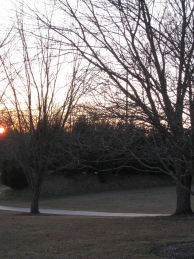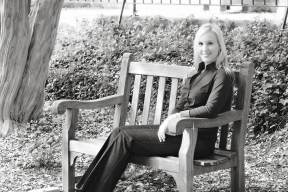Erika Robuck's Blog, page 32
January 20, 2011
The Pitch
This weekend, I'm traveling to New York for the Writer's Digest Conference where I'll have the opportunity to pitch my book, Hemingway's Girl, to agents. During the Pitch Slam I have about 60-90 seconds to talk about my book, and the agents have that amount of time to respond. (Think "speed dating.")
If you're so inclined, please read my pitch below and tell me if you have any suggestions for changes. Thank you so much!
* * * * *
Ernest Hemingway is arguably the best or worst thing that ever happened to Mariella Bennet.
Following the death of her father in a boating accident off the coast of Key West in 1935, Mariella struggles with her grief, supporting her family, and her lost dream of starting a charter fishing boat business with her dad. When she seeks a job working as a housekeeper for Hemingway, she hopes employment with Key West's richest and most famous family will help meet her obligations and help her realize her dream.
An unexpected flirtation with the writer, however, the continual scrutiny of his haughty wife, Pauline, and a budding relationship with a WW1 vet and boxer complicate Mariella's plans. Storms brewing in her relationships come to crisis as a hurricane threatens to destroy the Keys and all those she holds dear.
Set in the bars, boats, and boxing rings of Key West, and the Bahamian island of Bimini, Hemingway's Girl explores the worth of the individual, the gulf between the classes, and the boundaries of human hunger.








January 15, 2011
Review: The Distant Hours
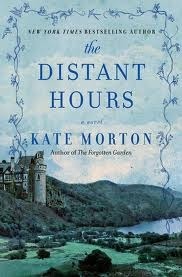
"It started with a letter. A letter that had been lost a long time, waiting out half a century in a forgotten postal bag in the dim attic of a nondescript house in Bermondsey….[I]t is said, you know, that a letter will always seek a reader…"
The Distant Hours, Kate Morton
The Distant Hours by Kate Morton was published in November of 2010 and is 576 pages. M J Rose recommended the book and said it was one of her favorite of last year, and since I tend to love her recommendations (and her books) I bought it. From page one I knew that I would love this book, and upon finishing it (at 1:30 in the morning, while I was sick, after reading it for three nights) I promptly went out and bought all of Morton's other books.
The story begins when Edie Burchill's mother, Meredith, who has always been emotionally inaccessible to Edie, receives a letter in 1992 that had been buried in a closet since 1941, that reduces her to tears. Edie is shocked by her mother's reaction and wonders what it is from her mother's past that has cast such a long and enduring shadow over her life.
It's not long after that Edie finds Milderhurst Castle, the ancient castle that has cast the shadow. It is the former residence of Raymond Blythe, the famed, reclusive author of Edie's favorite childhood tale, The True History of the Mud Man, and current residence of his strange, elderly spinster daughters: twins, Persephone and Seraphina, and their younger half-sister, Juniper.
When Edie is commissioned to write a new introduction to the old book, she's given access to the castle, the sisters, and the secrets of their past. What she finds out about her mother, the Blythe family, and the terrible, stormy night that started Juniper's descent into madness so many years ago changes all of their lives forever.
With its layered story lines, book and letter excerpts, multiple time periods, spooky castles, and unusual characters, The Distant Hours is the perfect Gothic novel. I enjoyed trying to piece together the mysteries, and devoured the book in just four days. If you love books like Jane Eyre, Wuthering Heights, Rebecca, or The Thirteenth Tale you'll love The Distant Hours. I give it my highest recommendation.








January 12, 2011
Interview: Susan Vreeland

I've been profoundly affected by the works of Susan Vreeland, and had many questions for her on process, theme, and subject. Ms. Vreeland was kind enough to answer some of my questions. If you've never read her books, I hope, after reading this, you'll venture into the worlds she creates with her writing.
1. From painters to glass designers, the subjects of your historical fiction are artists. Do you have a background in art as well as in literature, and how did you decide to devote your writing to those subjects?
No, I don't have any formal training in art, though I have a deep love for many works of art and for the artists who created them. As a child, I loved to visit my grandfather's painting studio, and was entranced one day when he took my little hand in his large, gnarled one, and together we painted a calla lily. I loved how the colors blended together instead of being sharply defined as they were with my crayons. My mother and grandmother were china painters and my mother referred to colors by their flower and fruit names–violet, hyacinth, tangerine, peach.
Coming out of the Louvre for the first time in 1971, dizzy with new love, I stood on Pont Neuf and made a pledge to myself that the art of this newly discovered world in the Old World would be my life companion. Never had history been more vibrant, its voices more resonating, its images more gripping. In a fashion I couldn't imagine then, I have been true to this pledge.
2. How long do you typically take to research and write a novel? Are the two processes separate or woven together?
Usually it takes me three years, the first six months of which is research, although that continues during the writing of the first and second drafts as I discover more that I need to know.
For me, the process of writing historically-based fiction falls into four steps.
a. Discovery. Finding the story one wishes to tell burind in known history is as exhilarating as discovering hidden treasure. The moment a novel idea presents itself, I must ask, Is this my story to tell? Does it allow me to express my sensibilities and offer something that reaches us in our contemporary world?
b. Focus. I have to decide upon a premise, conflict, themes, and I have to find a yearning of the main character. The sooner I am conscious of the themes and moral questions, the clearer the work ahead becomes. Research continues in these first two steps.
c. Select and Eliminate. In order to avoid narrative sprawl, I must select only those people, events, and aspects of a figure's life which contribute to the themes and focus, and I must eliminate those who don't.
d. Invention. In A Room of One's Own, Virginia Woolf, barred from the library as a woman, notes that women's history cannot be studied since the books are written by, for and about men. Instead women's history "will have to be read into the scene of its own exclusion. It has to be invented–both discovered and made up." Ah, made up, she says. Therein lies the historical novelist's permission.
Archival and published history don't always record personal relationships so characters must be invented to allow the subject to reveal the interior realm through intimate interaction. Scenes must also be invented to develop plot and themes, but I take care not to change known history or the character of a historical figure.
Typically, I write twelve drafts, and that's why it takes me three years.
3. Are you often able to visit the places and works of art that are the subjects of your novels?
Often, yes, but that has not always been so. Sometimes I've been to a place many years before I conceived on a novel in that place, as happened with Girl in Hyacinth Blue and the Netherlands. Sometimes my time is extremely limited in those places–one week in Italy during the last stages of writing The Passion of Artemisia, but three trips to British Columbia wilderness for The Forest Lover, two trips to Paris of ten days and two weeks for Luncheon of the Boating Party. I must admit that as I consider various subjects, I ask myself if the setting is a place I would like to visit.
4. What is the most challenging part of writing historical fiction?
Many challenges. One thing I try to avoid is including delectable bits of research that are not organic to the plot. Good historical fiction can make us feel, as the protagonist does, what would otherwise be dry facts, dates, numbers, place names, with people and feelings completely left out. In avoiding this, I try to present a truth broader than what the history books present, and more human–a truth of the heart. To do this, I must have interiority of the characters as vibrant and appealing as the exterior story.
The most rewarding?
Making the past alive with sensory detail is an exquisite delight. For example, "Milk-white oxen wearing flowered wreaths and hauling carts of olives blocked the road, but Pietro didn't seem to mind. 'I like that wooden chuk-chuk-chuk sounds of the olive pickers, the way it echoes through the orchards."
–from The Passion of Artemisia
I must admit that beyond the rewarding moments in the process of writing, I am profounding affected by letters from readers that validate my efforts. For example, these one line letters from around the world:
After reading your Passion of Artemisia, Florence and Rome are, for me, more beautiful. Thank you.
Luciano Ramella
Pavia, Italy
"Still Life" from Girl in Hyacinth Blue is the greatest meditation on art ever written.
Charlo in Malta
Portions of your book approached Dostoyevsky. Thank you.
Peter
5. You once said that historical novels can teach us so much. Did you mean the writing of them or the reading of them?
Both, but I must answer from my perspective as a writer. Louis Comfort Tiffany wrote, "Beauty is what Nature has lavished upon us as a Supreme Gift." Here I believe that he was speaking of visual beauty, and certainly Clara Driscoll loved the sensual beauties of the eye and ear. However, she, or rather the act of rendering her story, taught me that there are more types of beauty than just the sensual beauties. There is the beauty of instinctive acts of generosity and caring, as evidenced by Edwin, her one-time fiancé, leaping off the streetcar to tell the Russian woman of the job he found for her son. There is the beauty of Clara's compassion for the immigrant Tiffany Girls Julia and Olga who would both lead limited, hard-scrabble lives. There is the beauty of non-judgmental acceptance, as evidenced in her deep and genuine friendships with four gay men. In the last analysis, these beauties may be more profoundly important than the beauties of the visible world.
Thank you so much for your thoughtful answers.
For more on Susan Vreeland, visit her website at www.svreeland.com.








January 11, 2011
Review: Clara and Mr. Tiffany
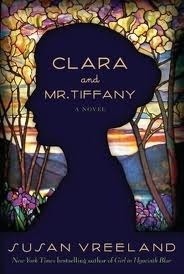
"Breaking up glass into small shapes, harmonizing colors, choosing textures, and setting them right to make something beautiful was healing. It was more than the pleasure of assembly that made it so. It was letting the colors sing, being open to their song."
Clara & Mr. Tiffany, Susan Vreeland (p 131)
Susan Vreeland's Clara and Mr. Tiffany is available in stores today and it is 432 pages. I was sent an advanced reader copy of the book from Random House for review. I originally fell in love with Vreeland's writing in her novel, Luncheon of the Boating Party. Her particular blend of fiction, history, and art instruction make for inspiring, thought-provoking text as richly layered as the colors on Renoir's canvas or the glass in Tiffany's lamps. Her literary talents are manifold, but among them are the artful weaving of historical data within the framework of the fiction, and the ability to teach art within her text.
The inspiration for Clara and Mr. Tiffany came from a cache of letters discovered in 2005 that revealed a woman named Clara Driscoll had actually designed the gorgeous lamps for which Louis Comfort Tiffany was famous, and that she headed a department of skilled women artists who invented and created some of the most breathtaking and intricate glass windows, panels, and lamps for which he was famous. The novel follows Clara as she tries to reconcile her work and love life over and over again, since Mr. Tiffany did not allow his female workers to marry. From the exhilaration of the creative process, to the tenderness of friendship, to the joys and heartbreaks of love, Clara's story shows the challenges of women's suffrage at the turn of the century and the complexities of human relationships.
I often have difficulty holding a large cast of characters in my head at one time but within the first few chapters of Clara and Mr. Tiffany, I realized another of Vreeland's specialties is drawing her characters vividly enough to animate them at first meeting, thus firmly embedding them in the reader's awareness. Each character is so unique and layered that it's obvious how much time Vreeland spent developing them.
In all honesty, my limited exposure to Tiffany glass before reading the novel left me feeling as if the colors were too bold for traditional interior design. After reading this book and now understanding the meticulous, precise, skilled process involved in their creation, I'll never again look at artistic glass or jewels with the same eyes.
Vreeland once again astounds with her attention to detail and scope of textual theme. If you are an artist, writer, or lover of the creative process, you will very much enjoy Clara and Mr. Tiffany.








January 7, 2011
Review: Pictures of You
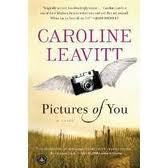
"A green sign, LEAVING CAPE COD, flashes by, and she starts to breathe. People sit in traffic for hours just to get here…and though everyone always tells her how lucky she is to live here, she's never wanted anything more than to leave."
Pictures of You, Caroline Leavitt
Pictures of You, by Caroline Leavitt, was published this month and is 336 pages. I connected with Caroline on Twitter and because this novel was picked as a Costco Book Club pick and as one of Oprah's books to watch for January, I couldn't wait to read it.
The book begins on a foggy road, south of Cape Cod. A photographer, Isabelle, is fleeing her life after finding out about her husband's affair, but her escape is literally stopped by a car parked across the highway. Unable to see the car and the woman, April, standing in front of it until it's too late, Isabelle hits the woman and her life is forever changed.
The tragedy ends up bringing Isabelle back to the very town she's fleeing. As the novel unfolds she develops a relationship with April's son, Sam, and his father, Charlie. What they all learn about each other and about April is surprising and transforming, and demonstrates the scope and breadth of human healing and forgiveness.
Pictures of You was very engaging. Leavitt's writing style and plotting kept me turning pages well past my bedtime. I was particularly touched by the relationship between Isabelle and Sam, and thought Leavitt superbly and honestly portrayed the grieving process and personal world of a child. The book is unflinchingly honest and the characters aren't always likable, but their motives are clear and their humanity redeems them.
If you enjoy books by Jodi Piccoult, you'll enjoy Pictures of You. For more on the novel, visit Caroline's website.








January 6, 2011
Be Still
I just had a call with my writing critique partner, Kelly, so we could set our goals for the New Year. Both of us are fighting miserable colds and physical ailments. Both of us are feeling the effects of the darkness of winter, the empty tree branches, the bitter blasts of cold. Both of us are incapable of writing at the moment for different reasons, personal reasons.
I can't speak for Kelly, but I find it extremely hard to forge ahead on another writing piece until the current work in progress is complete. I'm waiting for feedback from my editor, my beta readers, and book clubs, and the protracted silence from these readers feels like a circle of hell. It's not easy putting the baby out in the world, so every day between right now and when the first readers deliver their feedback feels like an eternity.
As we spoke of these things in our goal setting session we arrived at a beautiful place of acceptance. Acceptance of what this time is.
We are in sync with the season.
Sometimes you need to embrace the time of darkness, reflection, and quiet. Illness forces stillness, and sometimes it is the absolute only way to make a person sit still.
So we promised each other, until our bodies work through the sickness and we are fully awake, we will not start the next project.
We gave each other permission to be still.
Do you have a writing critique partner or group? I can't tell you how priceless and even necessary it is to have someone with whom to share ideas in your writing, how important it is to have someone else's work to read–who will read your work–regularly. Or even to have someone to remind you to stop and wait and be still and embrace the dormant time that comes before the spring.








January 2, 2011
2010 Blog Review & Stats
The stats helper monkeys at WordPress.com mulled over how this blog did in 2010, and here's a summary of its overall blog health:

The Blog-Health-o-Meter™ reads Wow.
Crunchy numbers
A Boeing 747-400 passenger jet can hold 416 passengers. This blog was viewed about 11,000 times in 2010. That's about 26 full 747s.
In 2010, there were 67 new posts, growing the total archive of this blog to 242 posts. There were 23 pictures uploaded, taking up a total of 37mb. That's about 2 pictures per month.
The busiest day of the year was January 6th. The most popular post that day was The Tudors.
Where did they come from?
The top referring sites in 2010 were erikarobuck.com, facebook.com, writerunboxed.com, erikarobuck.homestead.com, and twitter.com.
Attractions in 2010
These are the posts and pages that got the most views in 2010.
The Tudors December 2008
Book Review: Padre Pio: The True Story April 2009
Me October 2008
Book Review: The Complete Short Stories of Ernest HemingwayJan. 2009
Interview: Singer/Songwriters, Carbon Leaf January 2010
Thanks so much for stopping by!








December 29, 2010
Review: The Reed of God
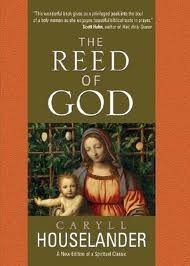
"[E]mptiness is the beginning of this contemplation.
It is not a formless emptiness, a void without meaning: on the contrary it has shape, a form given to it by the purpose for which it is intended.
It is the emptiness like the hollow in the reed…which can only have one destiny; to receive the piper's breath and to utter the song that is in his heart."
Caryll Houselander, The Reed of God
The Reed of God, by British mystic, artist, and philospher, Caryll Houselander, is 187 pages and was first published in 1944. I came across the writings of Houselander in a daily Catholic prayer book called The Magnificant, and was given this book as a gift. It is one of the most profoundly moving spiritual meditations I've ever read.
It is a short book, broken into four sections that emphasize the humanity of Jesus' mother, Mary, through four of the major mysteries of her life: the Annunciation of her pregnancy, the Visitation of John's mother, Elizabeth, the Birth of Jesus, and the Finding of the Child, Jesus in the temple. In these meditations are woven poetic tributes to both the human body and soul, and the beautiful significance of the environment, nature, and art to God's Being. There is also much reflection on the benefits of silence, simplicity, and patience, especially with ourselves and God through all the seasons of mood, enlightenment, and life, itself.
Most resonant to me is Houselander's contemplation on human restlessness and unease. She attributes this to the God in us seeking its source, and emphasizes all the idols we build to fill the emptiness when there is but one way to fill it and complete ourselves.
I'm in a spiritual book club where we read books of many faiths to discuss and seek out truths, and I have recommended this for our next selection. There is much in it that warrants discussion, whether the reader agrees with it or not. It is a decidedly Catholic book, and as a Catholic I gained much from it, but it might interest others outside of the faith to better understand our devotion to (not worship of) Mary, and to the role of art and nature in the church.
I feel like I've found a female C S Lewis, and The Reed of God is a book I will treasure and read often. For those interested in spiritual books or the Catholic faith, in particular, I can't recommend this book highly enough.








December 26, 2010
Review: Belong to Me
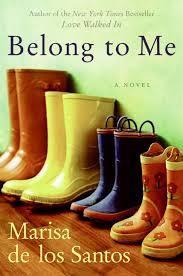
"[A]s we drove through as quiet a neighborhood as I had ever seen, I could not shake the feeling that we were home. I wanted and did not want to feel this way. My heart sank even as my spirits lightened and rose toward the canopy of sycamore leaves, the sleepy blue sky."
Marisa de los Santos, Belong to Me
Belong to Me, by Marisa de los Santos, is a work of fiction and was published in 2008. It is the sequel to de los Santos' New York Times Bestselling novel, Love Walked In. I won it in Therese Walsh's book giveaway, and I devoured it.
The main protagonist of Belong to Me is thirty-two year old city girl Cornelia Brown, who has reluctantly given in to the pull of the suburbs. Her entrance on the scene in her neighborhood is awkward, to say the least, and she finds herself tested again and again by the new women in her life. While she meets others' challenges head on with her confidence and general optimism, her own crisis threatens her in ways she never imagined.
Cornelia is one of the most original and charming characters I've ever read. Her snarky, self-depreciating narration is highly entertaining. What most impressed me about the characterization in the book was that just when I thought I had someone pegged, de los Santos surprised me. All of the characters are layered, flawed, and human, and, therefore, likable in some way.
It is such a treat read and love an author for the first time and find out she has published other books. I look forward to reading more from Marisa de los Santos.








December 19, 2010
Best Books of the Year

If you'd like some last minute gift ideas, I'd like to recommend my top ten favorite books I read in 2010. It was very difficult to narrow the list to just ten. These are books that changed me, that I haven't been able to stop thinking about, or that knocked me over with the sheer power of their literary finesse. The books on this list weren't necessarily published this year but I read them this year, and they are in no particular order.
Never Let Me Go by Kazuo Ishiguro
Sarah's Key by Tatiana de Rosnay
The Children's Book by A. S. Byatt
Luncheon of the Boating Party by Susan Vreeland
The Postmistress by Sarah Blake
Claude and Camille by Stephanie Cowell
If I Loved You I Would Tell You This by Robin Black
Devotion by Dani Shapiro
Mistress of the Sun by Sandra Gulland
Wolf Hall by Hilary Mantel
I'm building my list of books to read in 2011, so please tell me the best books you've read this year.
*Photo by seppukuu, courtesy of DeviantArt.com









